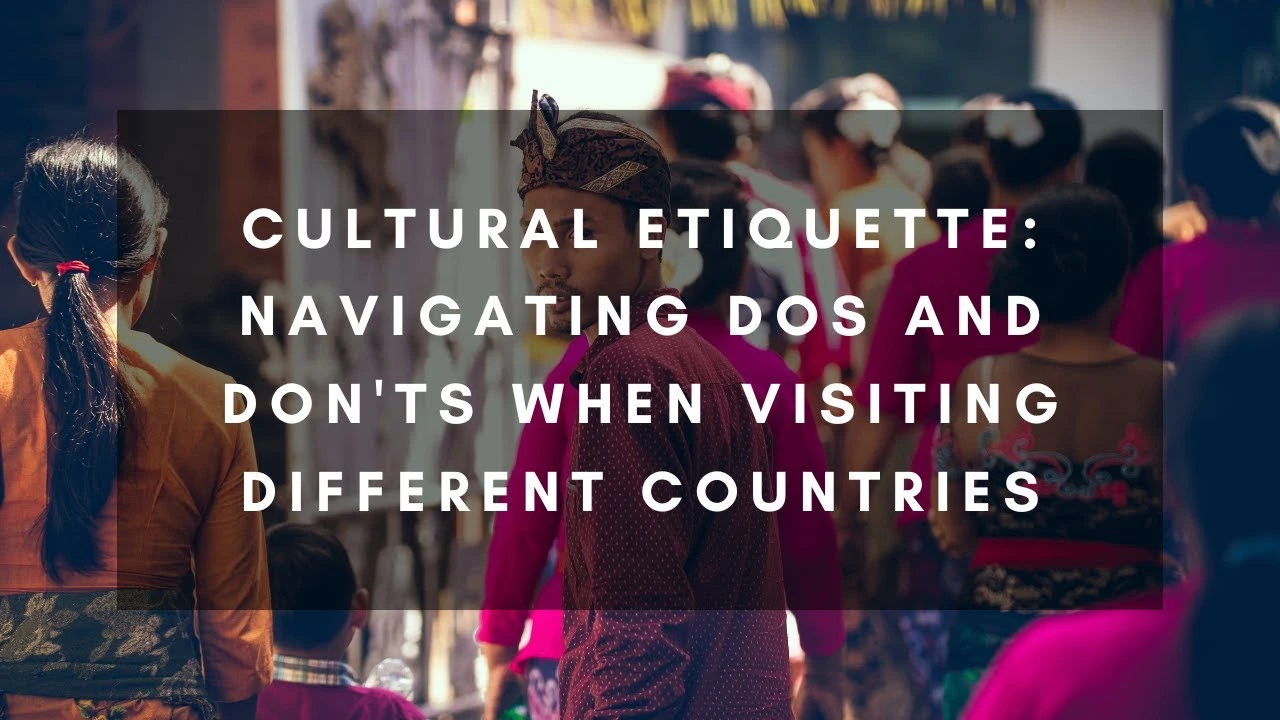Ever Wondered If You’re Breaking Unwritten Rules Abroad?
Traveling can be thrilling, but knowing how to act in a foreign country can be a challenge. Customs vary widely, and what’s considered polite in one place might be seen as rude somewhere else. It’s all about adapting and, honestly, sometimes laughing at yourself along the way. Here are some insights into etiquette across different cultures—from tipping practices to greetings, dining habits, and even the unexpected things that can cause offense.
1. Greetings: The Art of Saying Hello
Every country has its own way of greeting, and getting it right can set a positive tone for your interactions.
- France: A cheek kiss (or two, or even three depending on the region) is common, even among acquaintances. But, if you’re just meeting someone for the first time, a handshake works.
- Japan: Bowing is traditional, with the depth of the bow showing respect. And handshakes? Rarely a thing, unless you’re in a more international setting.
- Thailand: Use the “wai”—a slight bow with your palms pressed together. It’s polite, and locals appreciate the gesture when foreigners try it.
2. Dining Etiquette: Don’t Stick Your Chopsticks Upright in Japan!
Dining is a big part of experiencing culture, and rules here can be subtle but essential.
- Japan: Never stick your chopsticks upright in your rice. This resembles an offering to the dead and is considered bad luck. Also, avoid passing food directly from chopstick to chopstick for similar reasons.
- Middle East: Meals are often communal, and using your right hand to eat is customary. Avoid using your left hand, as it’s considered unclean.
- Italy: In Italy, it’s often said that cappuccinos are for breakfast only. Order one after 11 a.m., and locals might give you a strange look. Stick to an espresso after a meal if you want to blend in.
3. Tipping Culture: When and How Much?
Tipping practices vary drastically and can cause some confusion. Knowing what’s customary shows respect and can prevent awkward situations.
- United States: Tipping is almost mandatory in the U.S. because service industry workers often rely on tips for income. Generally, 15-20% for restaurant service is standard.
- Japan: Tips are often refused as people take pride in their work without expecting extra. Instead, a polite bow or thank you is appreciated.
- Europe: Tipping isn’t as rigid in many European countries. Often, rounding up or leaving small change is acceptable, though it varies.
4. Personal Space: Close Encounters and Respecting Boundaries
How close is too close? In some places, standing close is a sign of friendliness, while in others, it might make people uncomfortable.
- Latin America: People tend to stand closer and may even touch during conversation. It’s a warm, expressive way of communicating.
- Scandinavia: Personal space is essential, so give a little distance when interacting. People here value their space and can feel uncomfortable if you’re too close.
- India: Physical boundaries can depend on context. Public displays of affection are often frowned upon, but personal space is not as emphasized as in Western countries.
5. Dress Codes: Respecting Local Attire
Dressing appropriately is not only about fashion but showing respect.
- Middle East: Modesty is appreciated, especially for women. Covering shoulders, legs, and sometimes hair in certain settings, like mosques, is expected.
- Europe: In churches or religious sites, wearing sleeveless tops or shorts can be seen as disrespectful. It’s always a good idea to carry a shawl or scarf.
- Southeast Asia: In many temples, showing too much skin can be offensive. Shoes are often left outside before entering religious sites, so remember to wear slip-on shoes for convenience.
6. Public Displays of Affection: When Holding Hands is a Faux Pas
PDA norms vary by culture and can be misunderstood by travelers.
- Middle East and India: Public displays of affection, even hand-holding, can be frowned upon in more conservative areas. In some cases, it can lead to fines or other consequences.
- Western Countries: Holding hands, hugging, and even kissing in public are generally acceptable, though there may still be a limit in highly formal settings.
- Japan: Public affection is generally minimal. Couples are often reserved, so keeping things low-key is a good rule of thumb.
7. Gestures: That Innocent Hand Signal Might Mean Something Else
Gestures can be the easiest way to miscommunicate abroad.
- Greece: Avoid showing your open palm, as it’s considered offensive.
- Thailand: Don’t touch anyone’s head, as it’s considered the most sacred part of the body.
- Italy: Italians are expressive with hand gestures, but be cautious when imitating—some gestures can be offensive if misinterpreted.
8. Respecting Local Traditions and Beliefs
Every culture has its traditions, and respecting them shows appreciation and humility.
- Australia: Respecting Indigenous sites and traditions is crucial. For example, climbing Uluru, a sacred Aboriginal site, is discouraged.
- China: Avoid discussing sensitive topics like politics or Tibet, as this can be seen as rude or intrusive.
- New Zealand: The Māori culture is integral to New Zealand’s identity, so learning a few basic words in Māori, like “kia ora” (hello), can be a respectful gesture.
9. Gift Giving: Meaningful or Misunderstood?
Giving gifts has special significance in some cultures and requires thoughtful consideration.
- Japan: Gift-giving is an art. Present gifts with both hands, and don’t be surprised if they’re refused once or twice out of politeness before acceptance.
- China: Avoid giving clocks as gifts, as the word for “clock” sounds like “end” in Mandarin, symbolizing death.
- Middle East: Be cautious with alcohol gifts, as many people avoid alcohol due to religious beliefs. If you’re unsure, sweets or chocolates are a safe choice.
Wrapping It Up
Traveling to different countries comes with the joy of discovering new ways of life and the challenge of understanding unspoken cultural rules. While some things may seem unusual or even inconvenient, respecting these customs can make your journey smoother and more enjoyable. So, next time you’re jetting off somewhere new, keep an open mind and embrace the cultural learning curve—it’s part of the adventure!









